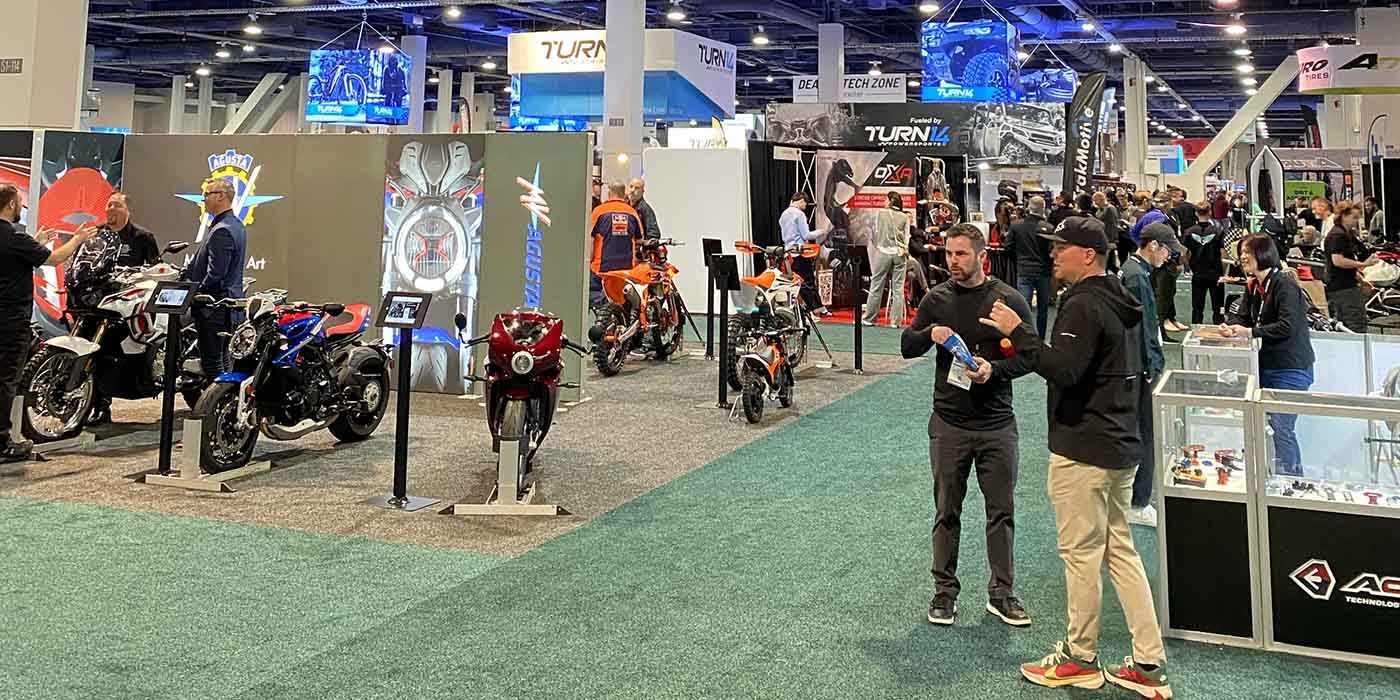You see it every day in motorcycle dealerships everywhere: the furtive glance from a would-be buyer on the sales floor trying to avoid any human interaction; the legs of a new customer sitting in your office bouncing like a jackrabbit; the dreaded eye roll you’ll easily detect on the most skeptical of prospects.
Are these people nervous about being in your dealership? Are they excited to take their first long weekend ride? Could they be apprehensive about the investment or even doubt your status as a sales professional?
Your ability to correctly interpret such unspoken behaviors and respond appropriately to them will set you apart from your less savvy competitors and might even make the difference between winning and losing the sale.
As someone who sells motorcycles for a living, you can usually separate customers who send off nonverbal signals into three categories:
- No Bodies: These people are in a negative mood, feel threatened or are worried, and probably do not intend to buy today.
- Busy Bodies: Even when these people are in your store, they’re easily distracted or have other things on their mind.
- The Body Electric: These customers are so focused and so in tune with what you’re saying that they’re almost ready to whip out the checkbook now.
I call body language that communicates a customer’s intentions “nonverbal tells,” or “NVTs”. Similar to the way a serious poker player’s behavior changes as the game progresses, so too does a customer’s as the sale progresses.
Here are 15 common NVTs you might observe during a typical day:
NVT 1: Looking for Action
A customer walks into the showroom, looks around, smiles, eyes wide and makes eye contact with staff members. This guy knows why he’s there, and he’s ready for action. “Yo!” you shout from across the floor. “Wanna see something cool?” (I’ve never had anyone say “no” to that question.)
NVT 2: Not Quite Ready for Action
A customer walks into the showroom floor looking down at his boots with no distinct facial expression and avoids eye contact. This guy thinks he’s entered the shark tank and doesn’t want to be approached. Proceed carefully — not boisterously or aggressively. I would start with something like this: “Hi, my name is Mark Rodgers. Welcome. Would you like to see something cool?”
NVT 3: The Curious Smile
A customer appears to just be browsing, but he’s smiling and enjoying the experience. Do everything possible to keep that engagement high. Introduce yourself, hand out brochures, show him pictures, take him on a tour of the store, introduce him to
others (especially the dealer principal) and invite him to take a test ride.
NVT 4: The Questionable Squint
A customer appears to just be browsing, and he’s smiling. However, he’s also squinting as if deep in thought. Don’t startle this buyer. Give him some space and eventually introduce yourself. Invite him to get your attention if he has any questions.
NVT 5: Standing Alone
This customer isn’t moving much. He’s simply standing back and admiring different rides. He’s not sitting on or walking around them. Make this prospect more comfortable by giving him permission to do more than just stand there: “Please make yourself at home. Feel free to sit on any bike we have on the floor. If you’d like, I’d be more than happy to pull one out of the line so you can have a better look. The only bikes you can’t touch or sit on are the ones over there, behind the ropes. They are antiques, but I’d be happy to tell you about them.”
NVT 6: Touching Them All
One of the customers in your dealership is crawling all over the bikes. This guy feels comfortable, really comfortable. Pull the bikes outside and start them up. If he has a motorcycle license, get him on a test ride pronto!
NVT 7: Distant Early Warning
If a customer engaged in conversation with you seems to be keeping his physical distance or turns his torso away from you, he either doesn’t like your sales pitch or the ride, and he’s looking around the dealership for a different motorcycle — or maybe even a different salesperson. Tread lightly. Try to engage the customer by inviting him closer to the bike and encouraging him to sit on it. Or, follow the direction in which his torso is turned and suggest a model on display in that area of the store. You don’t want to lose this one; you just need to help him figure out what he wants.
NVT 8: Eyes on Fire, Option 1
Sometimes, when you reveal the retail price of the motorcycle you’ve spent the past 20 minutes pitching, your customer’s nostrils flare, head leans in and his eyes widen. Yep, you have a full-blown case of sticker shock on your hands.
NVT 9: Eyes on Fire, Option 2
Eyes flaring can also mean something else. For example, when you explain that “this bike has a 103-cubic-inch, 45-degree air-cooled Harley-Davidson V-Twin that cranks out 104.7 foot-pounds worth of torque, making it a scream to ride,” your customer’s eyes might pop open as his head leans in. “Wow! That’s impressive,” he proclaims. “It sure is,” you quickly add. “Do me a favor and throw your leg over to see how it fits.” Keep the buyer’s interest and emotion running high.
NVT 10: Wrist Watching
When a customer looks at his watch, that’s about as clear a “tell” as you’re going to get. If you’ve told the customer that a particular phase of the purchasing process would take 15 minutes, and you’re on minute 19, guess what? Scramble, man, because you’re not living up to your end of the bargain. That’s why you should always
estimate longer times and then come in earlier.
NVT 11: Wrist Treatment
Speaking of watches, an individual’s wrist wear can communicate a lot. Does the customer wear a basic watch? This person doesn’t care about a bunch of extras, so focus on the no-nonsense functionality of a given motorcycle. If the watch is elegant, that might suggest the person values style and design. What do you say when a customer has a watch that doubles as a heart-rate monitor? “With this set of instruments, you’ll know everything from your exact RPMs to your mileage to the ambient air temperature to what time your wife called.”
NVT 12: Restless Legs Syndrome
During your sales discussion, the customer might start tapping a foot or bouncing a knee. Former FBI agent Joe Navarro, author of “What Every BODY Is Saying,” writes that feet and legs are the most revealing when it comes to a person’s true intentions. Customers who shift feet from the flat to ready position usually have other things on their mind, don’t have time for a full-on sales pitch, or are super excited and want you to hurry. If the buyer is itching to leave and now isn’t the right time to close the deal, give the buyer your card, inform him of the hours you work and arrange a better time to compare models and go for a test ride. If, on the other hand, you can tell he’s super excited about the bike, continue selling.
NVT 13: The Singing Buyer
If a customer is quietly humming or singing to himself, he’s obviously in a good mood, comfortable and enjoying himself. If, on the other hand, he’s loudly singing to others, he’s just come from the pub. Either way, you’re in for a fun sales conversation.
NVT 14: Showing Some Neck
There are times when you can actually help control your customer’s nonverbal behavior. For example, if you’re not doing so already, get in the habit of using a purchase overview statement. When a customer takes the deal, explain what’s going to transpire next (such as paperwork time with the accessories guy, followed by a quick talk with a tech-service rep). Then, watch your buyer display the physical manifestations of relaxation, most notably, loose shoulders and arms, and no hesitation to reveal the neck. When a customer uses their hand to cover their neck, it’s an indicator that the brain senses confusion, a threat, stress or an objection. When your customer drops the hand, he also lets down his guard.
NVT 15: The Dreaded Eye Roll
When you tell a husband and wife that you need to talk to your manager, you’ll notice the dreaded eye roll come from him as he shoots her a look. It’s a difficult cue to miss and means that the husband doesn’t believe or trust you. Avoid sending the wrong impression. The husband didn’t ask for a major run-the-numbers discussion; he just wanted to know what an average monthly payment would be for the motorcycle. Now that you saw the eye roll, you must quickly recover from it. Ditch the idea of asking your manager and give the couple an average payment with the caveat that each individual’s payment plan is unique. If you’re not comfortable doing that, try this: “Please understand that your question is outside the bounds of my immediate authority, so I need to ask for guidance. I’ll be back in a minute.”
Remember: don’t be too caught up in facial expressions or any nonverbal communication. Buyers’ thoughts often gravitate toward other things — such as situations back at the office or chores at home. So, be aware of body langua
ge, but don’t try to monitor every tick, blink and grimace. Otherwise, you’ll drive yourself (and others!) crazy.
An award-winning author, top-rated trainer and founder of Peak Dealership Performance, Mark Rodgers holds a master’s degree in adult education and the National Speakers Association Certified Speaking Professional designation — only 500 people in the world have this coveted recognition. Contact [email protected] to improve your performance.













